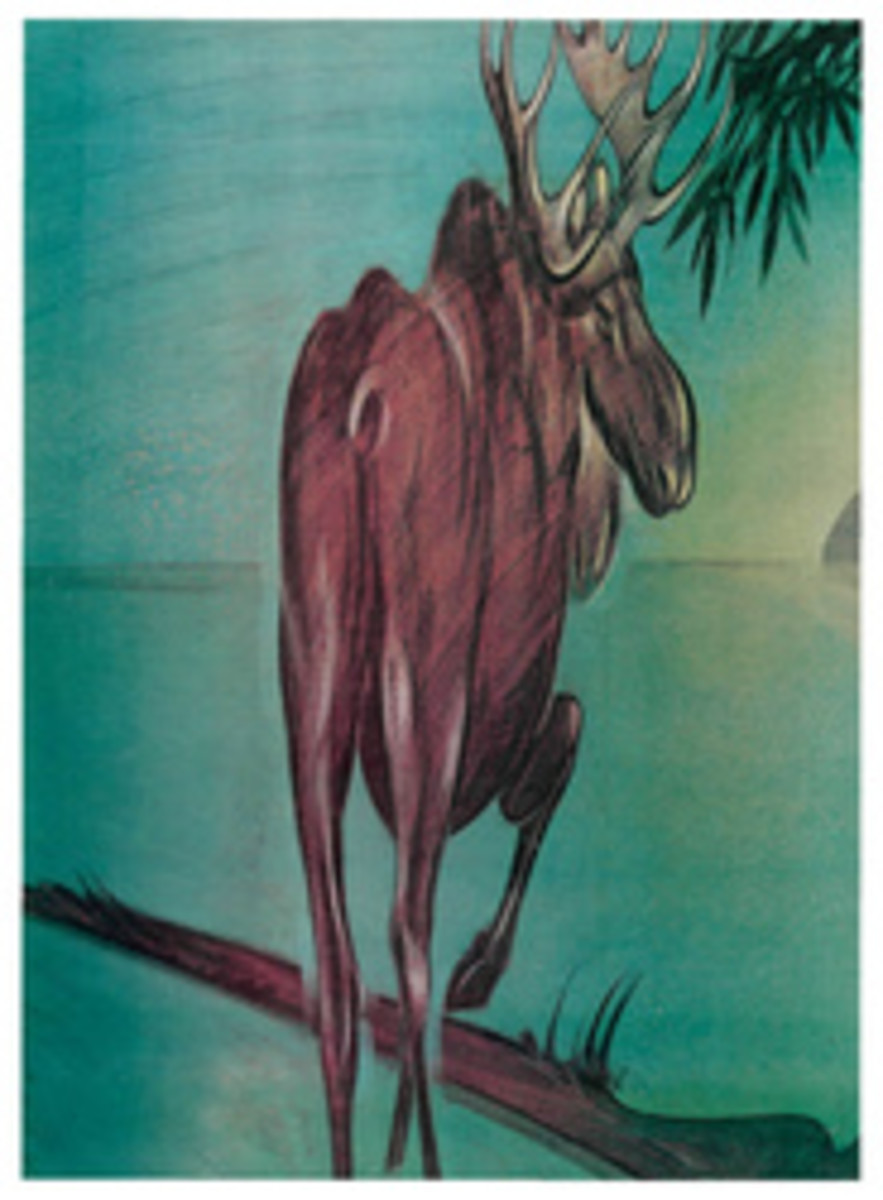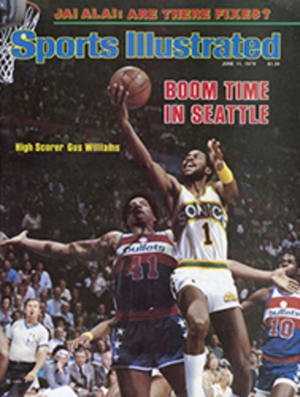
A bunch of basket cases
It had been 41 years since the last James Gordon Bennett balloon race. Almost every year from 1906 to 1938, the world's best gas balloonists gathered in Europe or the U.S. to compete for the Gordon Bennett Aeronautic Cup. The winners were those who were most expert at finding the right winds at the right altitudes and thus flew farthest from the launching point. The record holder was Maurice Bienaimè of France in La Picardie, which in 1912 wafted from Stuttgart to Riga, a distance of 1,361 miles.
In 1939 the defending champion Poles were set to stage the race—but that was the year the Nazis marched in. After the war, for one reason or another, the race was not resumed—until a fortnight ago, when 17 balloons from 10 countries ascended over Long Beach, Calif. and the Gordon Bennett was off the ground again.
The winner was Double Eagle III of the U.S., piloted by Ben Abruzzo and Maxie Anderson, who, with a pal named Larry Newman, last year had made the first transatlantic balloon crossing. This trip—617 miles in a little more than 47 hours—was made with a double-walled polyethylene balloon, each layer only two millimeters thick. It looked like something the Jolly Green Giant would put a sandwich in—a giant Baggie.
The man responsible for resurrecting the race is another American balloonist, Dr. Tom Heinsheimer, 39, an atmospheric physicist who rides in balloons across the Los Angeles basin to study air pollution. Heinsheimer decided in the summer of 1977 to try to bring back the Gordon Bennett. He had just sailed over the Alps in a gas balloon and was sitting in a Swiss bar talking with friends about the grand old days. "There had been revival attempts over the last 40 years, but none had come to anything," he says. "I found allies on the international scene. The Swiss rallied around. Their position was, 'It's impossible, and perhaps a mad thing to do, but we'll be glad to compete.' "
Heinsheimer got the proper international sanctions and the approval of the Poles, who were still the defending champions, after all. The U.S. had practically no gas balloons—hot-air balloons can't fly nearly as long, but they are much cheaper to operate. Heinsheimer convinced American balloonists that the Gordon Bennett was really going to return. Four gas balloons were built, the Double Eagle III, and three by Ed Yost of Tea, S. Dak.
Tradition was honored. James Gordon Bennett, the promotion-minded publisher of the New York Herald (the man who sent Stanley to find Livingstone), had donated the first cup. So Heinsheimer persuaded the Paris International Herald Tribune, a descendant of Bennett's newspaper, to sponsor the competition.
"The minimal use of ballast will be the name of the game," said Chauncey Dunn of Denver, who piloted Cloud Dancer. "One bag of ballast overboard will take you from sea level to approximately 560 feet. Let's say you're trying to make a decision to go from 13,000 to 14,000 feet. That will take six bags of sand, because the air is much less dense up there."
The mood was festive at the launching site, a large parking lot off the port bow of the Queen Mary. (The old girl has found a permanent mooring in Long Beach harbor and serves as a hotel, museum, municipal landmark and home for Sparky, the electric eel.) T shirts and patches proclaimed HOT AIR IS MY BAG, BALLOONING is A GAS. Security was lax and gawkers found it easy to slip inside the gates and peer down into the wicker gondolas—which look like glorified laundry hampers—and poke at the balloons. Some idiot wore golf shoes to do a polka on the spread-out Polish balloon Polonez. Or maybe it was an anti-Communist zealot with an ice pick. Whatever, when Polonez was inflated on Sunday, it leaked. A crew member wearing a gas mask crawled inside and discovered light streaming in through about 30 small holes. After careful patchwork, the Poles took flight—but only for a little more than six hours.
Most of the launchings were stirring—up, up and away while thousands cheered. But a few were tragicomic. Columbine II, an unofficial entry because it held more helium than the rules allow, had too much ballast, lifted briefly and then splashed down into the harbor like a returning space capsule before taking off again. Two balloons, Columbine II and Belgium's Belgique, were shot at by nuts on the ground.
Other aeronauts had more pleasant experiences with the L.A. area citizenry. Erwin Sautter, carrying two U.S. passengers in his Swiss entry, Ajoie, came down near a fiesta in Duarte, and the crew was treated to pizza and beer. Japanese engineer Saburu Ichiyoshi, the pilot of Joinus (a gasbag made in West Germany), sailed across the approach corridor to Los Angeles International Airport and found himself so close to a jumbo jet that he could almost see the passengers' faces at the windows. Joinus continued over Dodger Stadium, then came down in a hilly L.A. neighborhood, where residents helped roll up the balloon.
An international jury decided to allow launches either Saturday or Sunday, and Abruzzo and Anderson elected to go up the morning of the second day. They were unhappy that race officials had imposed an altitude limit—15,000 feet—to give the older, heavier European balloons a sporting chance against the new American models. The two Albuquerque businessmen had hoped to go much higher than that, catch the right wind, and become the first balloonists to go all the way across the continent.
The Europeans grumbled that skill should win the race, not technology. The Abruzzo-Anderson camp grumbled that Orville and Wilbur Wright, said to have written the original Gordon Bennett rules, had said nothing of an altitude limit. "The altitude rule is really kind of aimed at us," said Anderson. "In the past they never had such limitations. Only size was limited. This balloon doesn't have the structural strength of the other Double Eagles. The slightest tear and the whole balloon goes. We increased our risk to be competitive, and then new rules were imposed on us in the last couple of weeks."
It was overcast when Double Eagle III was launched, a string of red New Mexico chili peppers trailing from the gondola in contrast with the dark blue jump suits worn by Abruzzo and Anderson. In seconds the semi-transparent balloon itself was invisible against the gray sky. The basket seemed to be floating all alone in the air.
The New Mexicans' intention had been to head out over the Pacific, drift south and come back eastward over Ensenada and the Sea of Cortez. Instead, they went out over Santa Catalina and other Santa Barbara islands and baked for hours in 85- to 100-degree temperatures. They were entangled in a weather phenomenon known as the Catalina eddy and couldn't break loose. It was 2 a.m. before they hooked back in over land, north of San Diego.
Using their 260-foot nylon drag rope, they practically felt their way over two sets of mountains near Palm Springs. Farther on, they cleared one mountain by two feet; Abruzzo had to swing a six-foot camera boom out of the way.
Over the desert, headed toward Las Vegas, they got on a thermal roller coaster. Fifty miles south of Vegas the balloon was sucked down and the basket, said Anderson, "hit the ground pretty damn hard." Double Eagle III bounced up 30 feet. The drag rope trailed across a power line, a fence and the main Las Vegas-Los Angeles highway.
"A bigger power line was ahead," said Anderson. "The nylon rope dragged across. The last three feet wrapped around and formed a half-hitch. We were doing 30 knots and the rope brought us to a sudden stop, as if somebody had bashed into a big tractor. It almost dumped us out of the balloon. If Ben hadn't cut the rope we would have been whipped to the ground at high speed."
Cutting loose the rope made the balloon zoom up as if propelled out of a slingshot.
Over Lake Mead, after the thermals had subsided, they ate a meal of French fries, ham and peas. Early last Tuesday morning Eagle got caught in "tremendous up and down drafts, going up and down like a yo-yo." Abruzzo was sleeping—curled up in the six-by-four-foot basket—and Anderson considered awakening him so they could both put on parachutes. But they got through that joyride without incident and Abruzzo took over the watch.
Anderson woke at daybreak to hear howling from below—a pack of raucous coyotes. The balloon crossed Utah's Henry Mountains at 13,000 feet and the men had to release helium to stay below the race height ceiling. Just over the line into Colorado, they felt certain they had clinched the championship. By radio they knew that their nearest rival, Nightstar, piloted by Dewey Reinhard and Joe Kittinger, had landed in Milford, Utah. Not far ahead loomed the San Juan Mountains, part of the Rockies, with peaks jutting up to 14,000 feet. They decided to land.
Easier decided than done. There was a 15-mph wind at ground level and they had cut away their main drag rope. They used a 150-foot nylon backup rope and a makeshift 20-foot line fashioned by Abruzzo out of two small cargo parachutes. Both ropes were weighted with oxygen bottles. To slow the descent, Anderson dumped sand and Abruzzo released helium. At 9:14 a.m. of the third day, they landed in a large pasture 13 miles northwest of Dove Creek, Colo. Both suffered minor bruises before their gondola stopped plowing the field.
Double Eagle III had made its first and last flight. Like less sizable Baggies, it is disposable. Not so the Gordon Bennett balloon race. At the Survivors' Banquet in the grand salon of the Queen Mary, the balloonists were already discussing next year's renewal.
PHOTO
Wafting over the wasteland toward Las Vegas, the two aeronauts survived one scary thump

